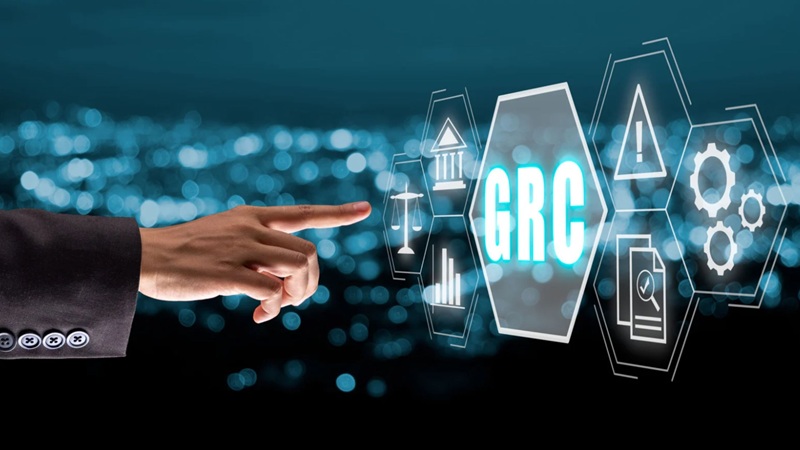With regulatory fines hitting record highs, managing legal risk is now a business essential. But reacting after the damage is done isn’t enough. A smart compliance management system gives your organization the tools to anticipate issues, meet legal obligations, and build a culture of accountability. It’s about staying prepared—not scrambling to recover. From policy enforcement to real-time risk tracking, these systems are key to running a secure, trustworthy operation.
In this article, we’ll explore how investing in a strong compliance process can keep your business protected and your reputation intact.
Understanding the Modern Legal Risk Landscape
Before implementing solutions, organizations must first grasp the evolving nature of legal threats. Today’s regulatory environment presents challenges that didn’t exist even a decade ago, requiring new approaches to compliance.
Emerging Risks Transforming Business Operations
Digital transformation has introduced novel legal challenges that organizations must address. AI and algorithmic decision-making now create potential liabilities around bias, transparency, and accountability. Companies using these technologies must understand what is grc and how it provides the framework for managing these emerging risks.
Cross-border data transfers also present significant legal complexities, with regulations like GDPR in Europe and CCPA in California imposing strict requirements with substantial penalties for violations. Additionally, ESG disclosure requirements and greenwashing concerns have created new legal vulnerabilities for companies making sustainability claims without adequate substantiation.
Supply chain transparency has become another critical legal risk area, with regulations increasingly requiring companies to verify ethical sourcing and labor practices throughout their entire supplier network.
The True Cost of Non-Compliance
The financial penalties for non-compliance extend far beyond initial fines and settlements. According to recent industry analysis, companies using automated GRC solutions have seen a 30% reduction in compliance-related costs compared to those relying on manual processes.
Hidden costs include reputational damage, operational disruptions, executive liability, and loss of customer trust. When major compliance failures occur, the market impact typically extends for 12-24 months, affecting everything from stock price to customer acquisition costs.
Organizations that fail to implement robust governance risk and compliance frameworks often discover these gaps only after suffering significant consequences, creating a reactive rather than proactive approach to legal risk management.
Building an Effective GRC Architecture
A properly designed GRC framework provides the foundation for comprehensive legal risk reduction. This structured approach ensures that governance, risk management, and compliance work together cohesively.
Governance Structures That Prevent Legal Exposure
Strong legal risk mitigation begins with proper governance at the leadership level. Boards must establish clear oversight responsibilities for legal risks, with dedicated committees focusing specifically on compliance matters.
Legal risk appetite statements define acceptable levels of exposure, helping organizations make consistent decisions about which risks to accept, transfer, or mitigate. These statements establish tolerance thresholds that align with organizational strategy and risk capacity.
Executive accountability frameworks create clear consequences for compliance failures, ensuring leaders prioritize legal risk management. These frameworks include reporting hierarchies with defined escalation protocols when significant legal risks emerge.
Regular board-level reviews of legal risk status help maintain visibility and drive continuous improvement in governance practices.
Risk Management Processes for Legal Threat Identification
Effective legal risk mitigation requires systematic processes for identifying and addressing potential threats. Organizations should implement standardized risk assessment methodologies with consistent scoring systems across all business units.
Predictive analytics and early warning systems can help identify emerging legal risks before they materialize into compliance failures. These tools monitor regulatory changes, industry enforcement trends, and internal risk indicators.
A comprehensive legal risk register documents all identified risks, their potential impacts, mitigation strategies, and responsible parties. This living document serves as the foundation for ongoing risk management discussions.
Third-party risk evaluation frameworks are equally crucial, as vendors and partners represent significant sources of potential legal exposure.
Compliance Frameworks Aligned with Legal Requirements
To mitigate legal risks effectively, organizations must implement compliance frameworks that map directly to regulatory requirements. Multi-jurisdictional mapping ensures coverage across all relevant regions where the business operates.
Automated compliance monitoring provides continuous verification of adherence to legal requirements, replacing periodic manual reviews with real-time oversight. This approach identifies potential violations early, allowing for prompt remediation.
Legal requirement change management processes ensure the organization stays current with evolving regulations. These processes include monitoring mechanisms, impact assessments, and implementation planning.
Regular compliance testing validates the effectiveness of controls, providing evidence of due diligence in case of regulatory inquiries.
Leveraging Technology for Advanced Legal Risk Prevention
Modern GRC implementation increasingly relies on technology to enhance effectiveness and efficiency. The right tools can transform legal risk management from a manual, reactive process to a proactive, intelligence-driven function.
RegTech Solutions for Automated Compliance
Regulatory technology has revolutionized how organizations approach compliance. AI-powered regulatory change monitoring systems continuously scan for new requirements, flagging those relevant to the business.
Automated document review tools can analyze contracts, policies, and procedures to identify compliance gaps or contradictions. These solutions significantly reduce the time required for manual reviews while improving accuracy.
Real-time risk scoring platforms provide instant visibility into compliance status across the organization, enabling faster response to emerging issues. These dashboards help leaders prioritize resources based on risk severity.
Blockchain-based compliance audit trails create immutable records of regulatory activities, providing stronger evidence of due diligence during examinations or investigations.
Creating a Risk-Aware Organizational Culture
Even the most sophisticated GRC framework will fail without a supportive organizational culture. People remain the critical factor in effective legal risk management.
Training Programs for Legal Risk Awareness
Role-specific compliance training ensures employees understand their personal responsibilities in mitigating legal risks. These programs should be tailored to job functions rather than using a one-size-fits-all approach.
Legal risk simulation exercises provide practical experience in identifying and responding to compliance challenges. These scenarios help employees develop judgment and decision-making skills that textbook training alone cannot provide.
Whistleblower protection programs encourage the reporting of potential legal violations by creating safe channels for raising concerns. These programs are critical for early identification of issues before they escalate.
Regular communication from leadership reinforces the importance of compliance and legal risk management across all organizational levels.
Common Questions About Legal Risk Management
1. What is the role of risk management in GRC?
The primary objectives of GRC risk management are to minimize operational and financial risks and to ensure regulatory compliance. A strong GRC framework helps prevent disruptions, supports adherence to industry regulations, safeguards a company’s reputation, and reduces the risk of legal penalties.
2. What is the role of GRC in security?
They assess security risks, develop risk mitigation strategies, and establish security controls to manage and monitor compliance.
3. Why is GRC so important?
GRC ensures that an organization complies with applicable laws, regulations, and standards. This reduces the risk of non-compliance penalties, reputational damage, and legal disputes for your organization.
The Future of Legal Risk Management
The legal risk landscape continues to evolve at an unprecedented pace. Organizations that invest in robust governance risk and compliance frameworks today position themselves for greater resilience tomorrow. By integrating governance structures, risk management processes, and compliance controls, companies can create a comprehensive shield against legal vulnerabilities while supporting business objectives.
The most successful organizations recognize that legal risk management isn’t merely about avoiding penalties—it’s about building sustainable business practices that create long-term value. With the right framework in place, legal compliance becomes a competitive advantage rather than just a regulatory burden.










Leave a Reply